Living on a boat has made us very aware of power usage. Our boat mostly runs on 12V power – lights, fans, water pumps, instruments – which comes from batteries on the boat. In this post, I’ll detail why and how we upgraded our boat to lithium batteries. We think it’s a good decision.
Rules of Batteries
Batteries on a boat are challenging. There’s all sorts of rules on things you should and should not do with traditional boat batteries. The main rules as we understand them:
- Replace them all at once
- Never let them go below 50% charge
- Make sure they are all the same type and brand
It goes on. But the world of batteries is changing rapidly with innovation going on in other industries finding its way into the world of boats. The new technology uses Lithium Ion and is far more efficient and takes up far less space.
Why We Upgraded our Boat to Lithium Batteries
Until very recently, Sava had the old battery technology. We had AGM, a form of Lead Acid batteries. They were 4 large blocks which were housed under one of our salon benches. Each of those batteries were, in theory, rated for 240 amp hours. So, again in theory, our capacity on the boat was 960 amp hours.
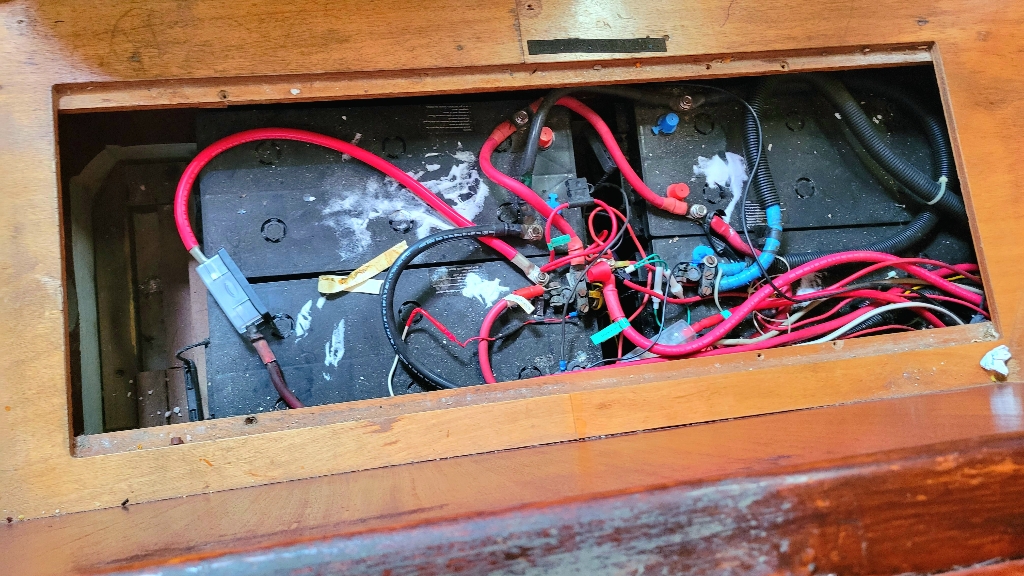
To explain a bit about capacity and what that means, we had to learn how much power various things in our boat use. On Sava, the biggest usage in power comes from our fridge and chest freezer. Combined, these two use about 15-18 amps, and they basically run all the time. Yes we have lights and fans, and when we’re underway the battery powers the autopilot and instruments, but these use quite little. So when we are using the fridge and freezer at 15 amps per hour, that’s about 360 amp hours in a day.
But remember one of the early sayings, “never go below 50% of your battery capacity”, so that 960 is already now down at 480 amp hours. And also remember that the number is actually the theoretical capacity. Batteries get old quickly, so that number drops probably about 15% per year as they age.
Charging Sava’s Batteries
We have a few ways of charging our batteries on Sava. First, we have solar panels, which, on a sunny day can add a little power to our batteries. Next, when we run our engine, our alternator charges the batteries. We also have a little honda generator that we put on the side of the boat and plug into our shore power outlet which is connected to a battery charger. Finally, when we’re at a marina, we connect to shore power and our charger tops up the batteries.
One of the challenges of AGM batteries is that the charging and depleting are not equal – not even close. It takes much more power in to top up the batteries than it does when we’re using that power. So if our solar power puts out 30amps to charge the batteries it ends up taking about 3 times as long to charge that 30amp hours as it does for us to use it in the boat.
Since we’ve been on Sava, we’ve always been challenged by the batteries. We probably ran them too low early on, when we didn’t know any better. We replaced individual batteries early on, again when we didn’t know any better. And finally, about 2 years ago, when we were in Marin, we did a full AGM battery changeout. We took better care of the new batteries, trying to keep them topped up when we could. But living on a boat, they get a lot of usage, and here in Panama, where it’s cloudy a LOT, we ran our generator to keep the batteries in good shape almost every night.
Help and Advice From Cruisers
The cruising community is pretty friendly about sharing boat projects and tips to make life easier onboard, and many of our friends have talked about making the switch to lithium ion batteries.
We kept hearing that the benefits were substantial. For one thing, the size difference is enormous. 800 amp hours of batteries in Lithium Ion is about 1/3 the size of AGM batteries. The other big difference is that you can actually use most of 800 amp hours – you can keep using them, and they retain the voltage until about 10% capacity. If we did that with AGM batteries, they would likely never charge up again.
Changing to Lithium Batteries
So in mid December, on our way to Bocas del Toro, where we are now, we decided we would make the switch and upgrade our boat to lithium batteries. Now that Sava is our permanent home, we decided the upgrade was worth the time and money. It’s not an easy switch.
we had to make other changes
Because lithium ion batteries charge very differently than our old batteries, we needed to switch out some of our other power equipment. Our solar controller (the machine that regulates the solar panels) had to be replaced, our battery charger didn’t work with the new batteries, and our alternator’s regulator needed to be replaced so it wouldn’t damage the new batteries. Essentially, with AGM batteries you can keep putting power into them when they are full, but with lithium ion, you can damage them by overfilling them, thus the change in charging technology.
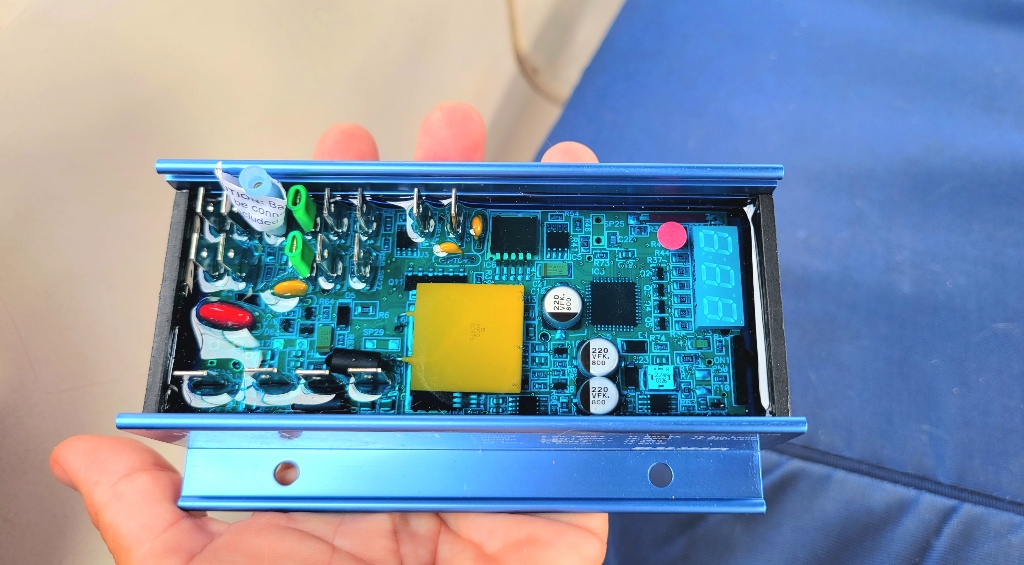
We also changed our inverter, which converts our 12V battery power to 120V AC, mainly because the new charger was combined with an inverter. We use this to power our TV, and other outlets in the boat, and charge our laptops.
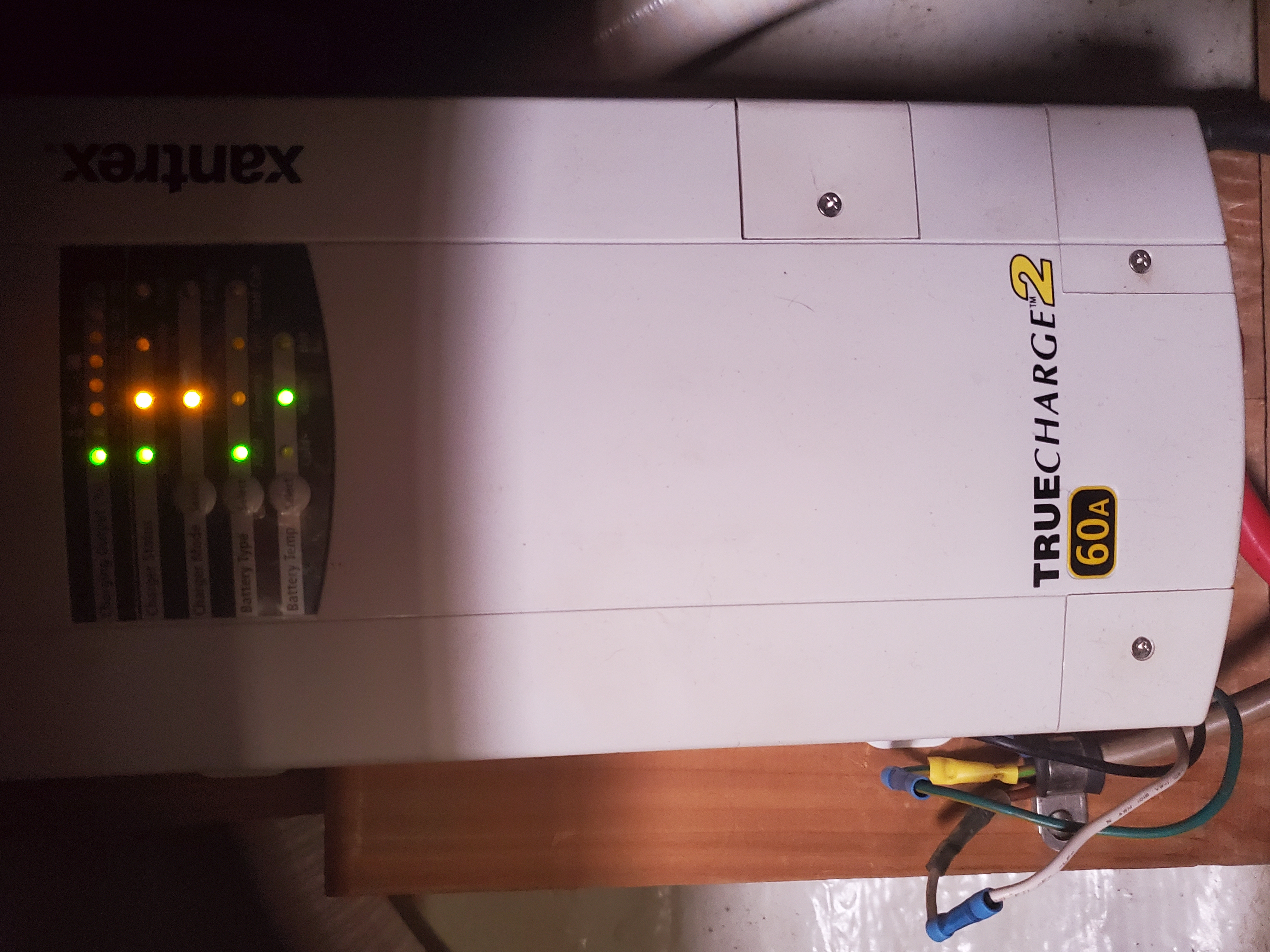
The Battery Order and Shipment
After a lot of research, reading forum posts, and talking to a lot of other cruisers, we made a fairly large order and had it shipped to Miami, where a shipping company put it on a boat to to Panama. We got batteries, new solar controller, new combo inverter/charger, battery management system (this helps the batteries know when to charge and when not to), and monitoring systems to help us understand our usage and keep the batteries in good shape. I think I read about 200 manuals in order to understand all the various wiring diagrams to find ones that made the most sense for the current equipment on Sava.
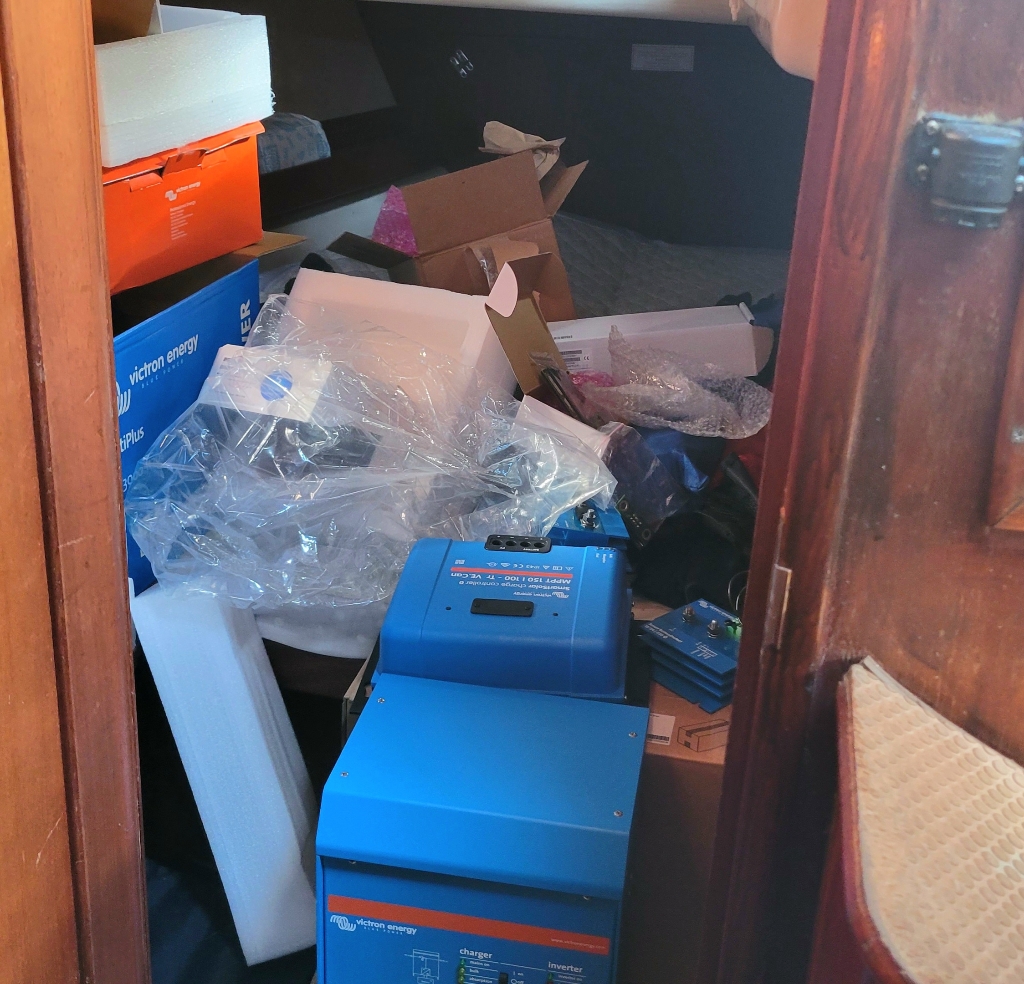
The Installation: We Upgraded our Boat to Lithium
And finally, in mid-January it all arrived. Boxes and boxes from one of the biggest names in this technology, Victron Energy. We finally had the equipment to upgrade our boat to lithium batteries.
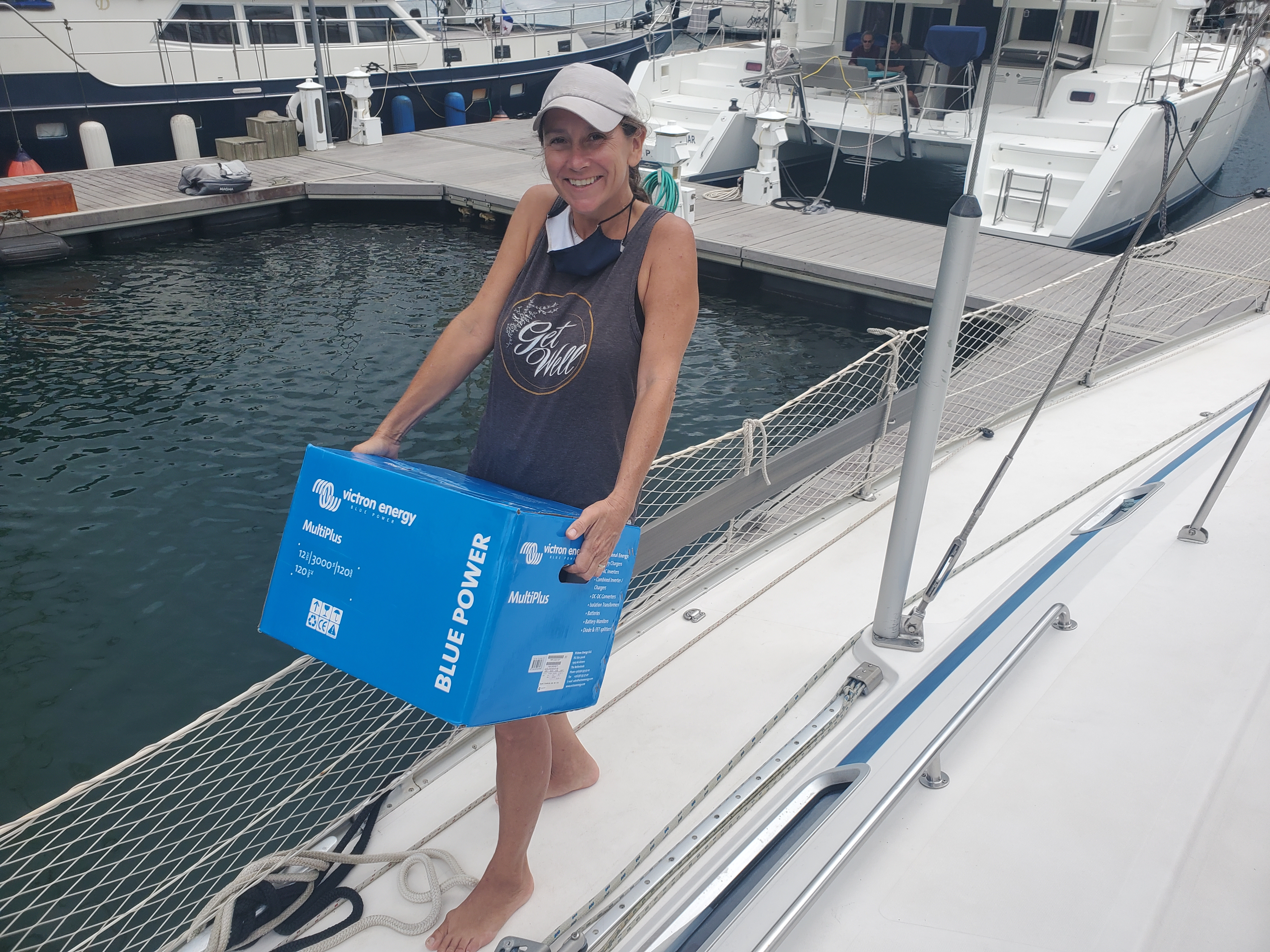
We then had to get it into the boat and take out the old equipment, at the same time not letting our fridges go warm while our 12V system was off. We made a few runs to the local hardware store for things like thick battery wire, connectors, and lots of odd bits and pieces.
Finally after getting most of the smaller things, with essential help from our boater friends Hughes from Carpathia and Brian from Sea Forever, and about 3 solid days of installation, we upgraded our boat to lithium ion. Whew!
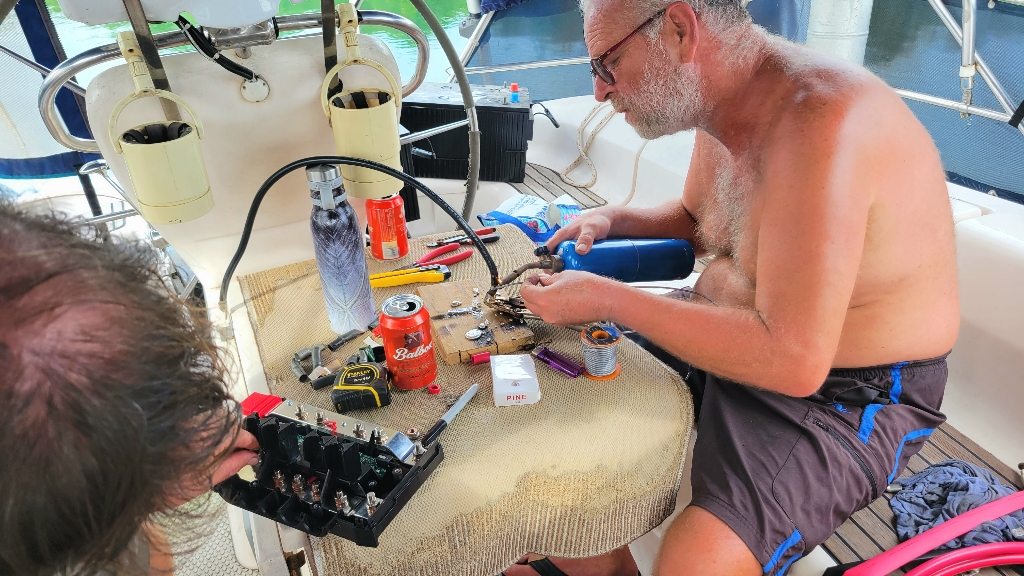
Space Saving with Lithium
The space savings are amazing. In the same location where we had just the batteries, under the salon seat, we now have:
- more battery power
- the inverter/charger
- the solar controller
- a distributor (which keeps the battteries even)
- a battery management system
- and a smart shunt (which essentially is the tool that helps us see how much power we’re using at any time, and also our history of power usage).
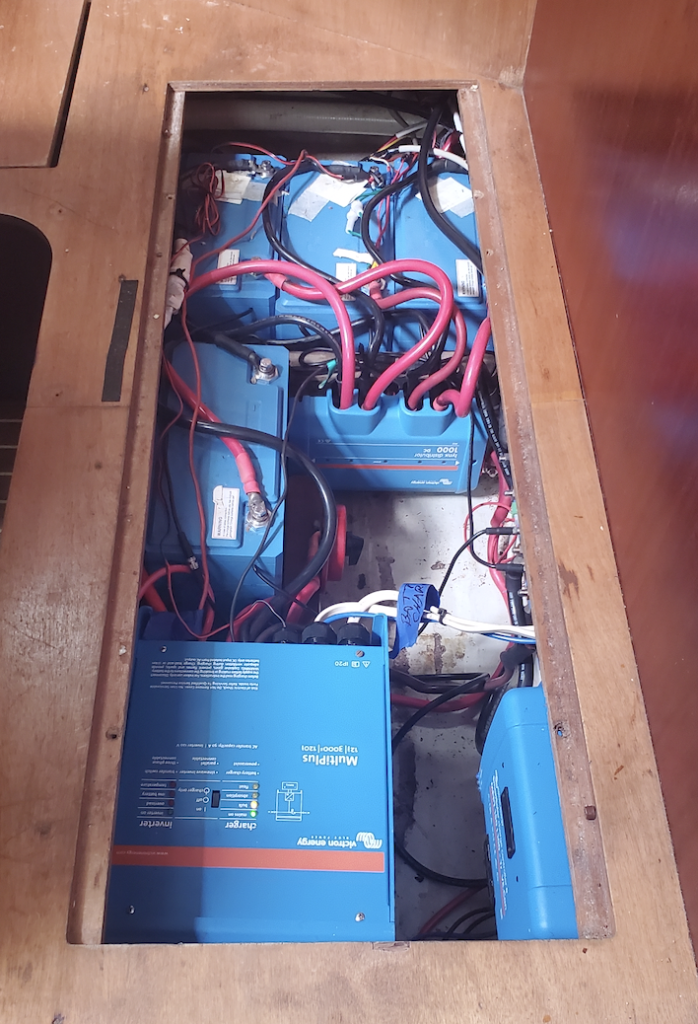
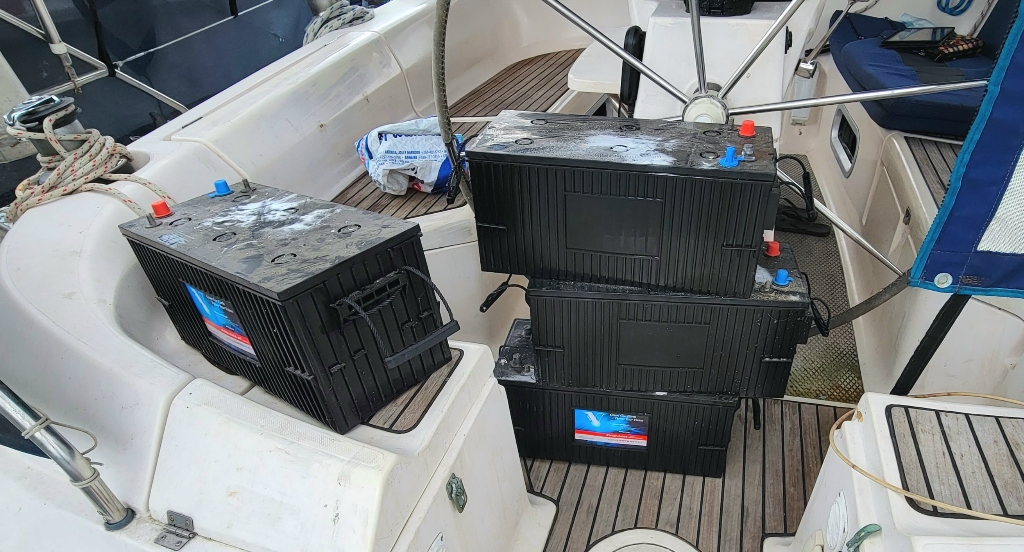
Our High Tech Battery System
What’s more, this system is now connected to something called a CerboGX, which can connect to the internet if there is wifi available. The CerboGX also allows us to see the state of the power on the boat remotely – when we take a trip inland for example!
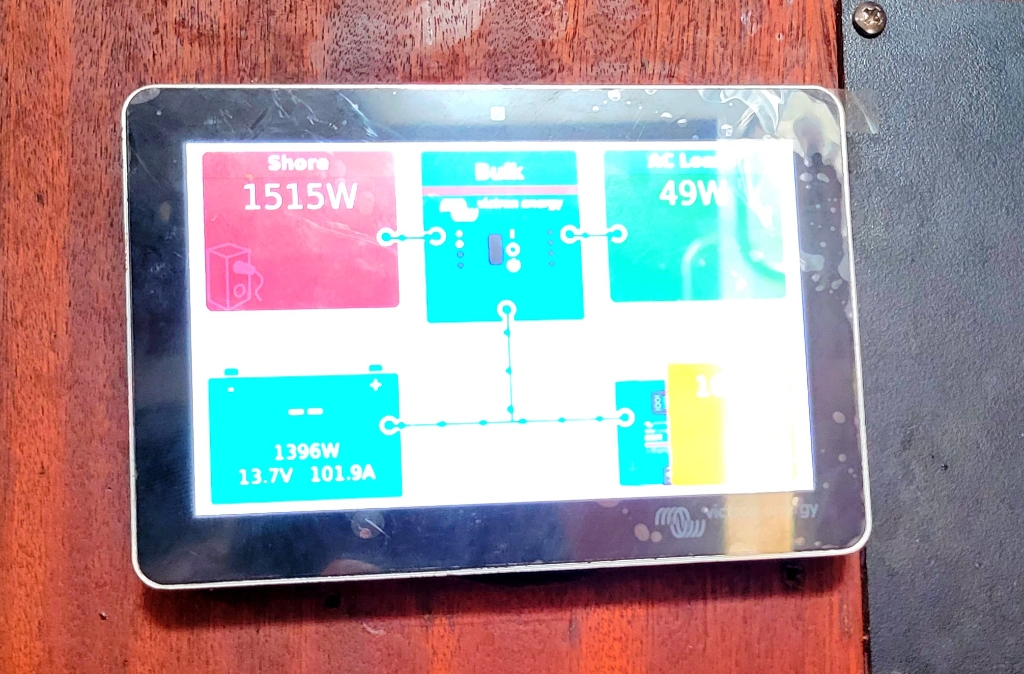
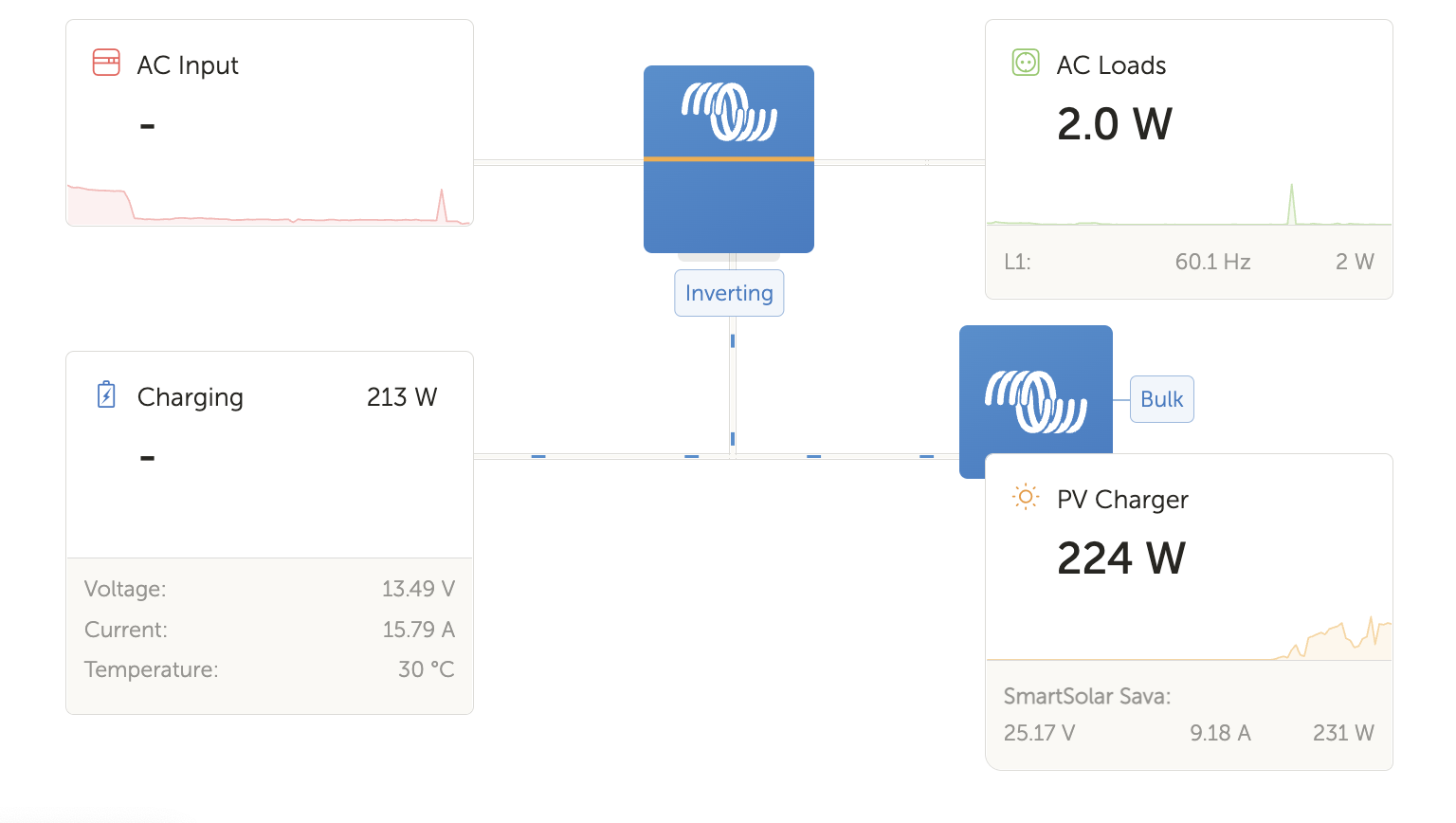
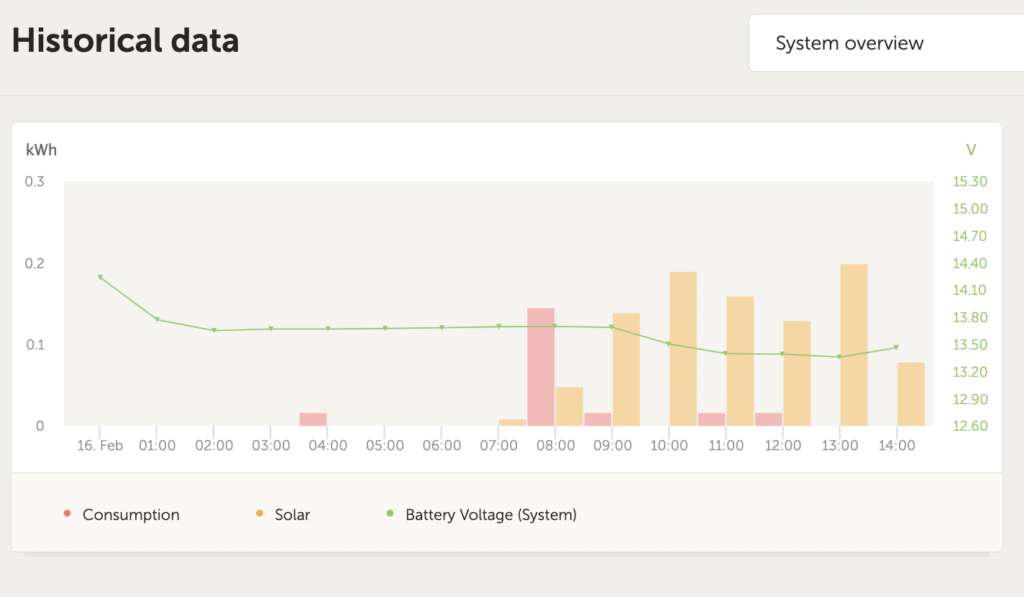
Using Our New Batteries
We’re still getting used to the new system and trying to understand how to use it properly as well as learning its limitations. One of the changes we made recently was to start boiling water with our kettle in the morning. It’s much faster than the propane stove! Plus it’s probably better for the environment, as it uses the solar power to make electricity. Our old 2000w inverter could have boiled water, and did a few times, but the new one at 3000W hardly breaks a sweat.
We also bought a little induction cooker which can heat things up in place of the propane stove (although we may need another pot or two, because some of ours are not metallic enough).
At some point soon we’ll want to upgrade our solar panels, but we’ll keep an eye on the current system and see whether it’s needed sooner rather than later. Until then we’ll enjoy the additional space and hopefully worry a lot less about whether we run out our batteries.
Have you upgraded your boat to lithium and seen positive results, or are you considering a change? Share in the comments!



Hi Guys, great write-up, wondering what the total cost of your Lithium upgrade ended up being?
thanks!
Thanks for the note Scott. From what I remember the total cost of all the parts was around $10k USD after shipping to Panama. We did most of the installation ourselves, with help from friends, but I think if you had a pro do it that’d probably be another $5k more for all the work that needed to happen. If you are thinking about changing batteries, definitely go for lithium. Our new boat we wouldn’t have bought without the lithium installed as I had already done one replacement and didn’t want to do another. Let me know if you have any more questions. Happy to provide thoughts.
What about insurance? I’ve been told that insurance companies are cancelling insurance if Li batteries are installed
Hi Mark, That’s news to us! Probably your best bet would be to talk to an insurance agent.